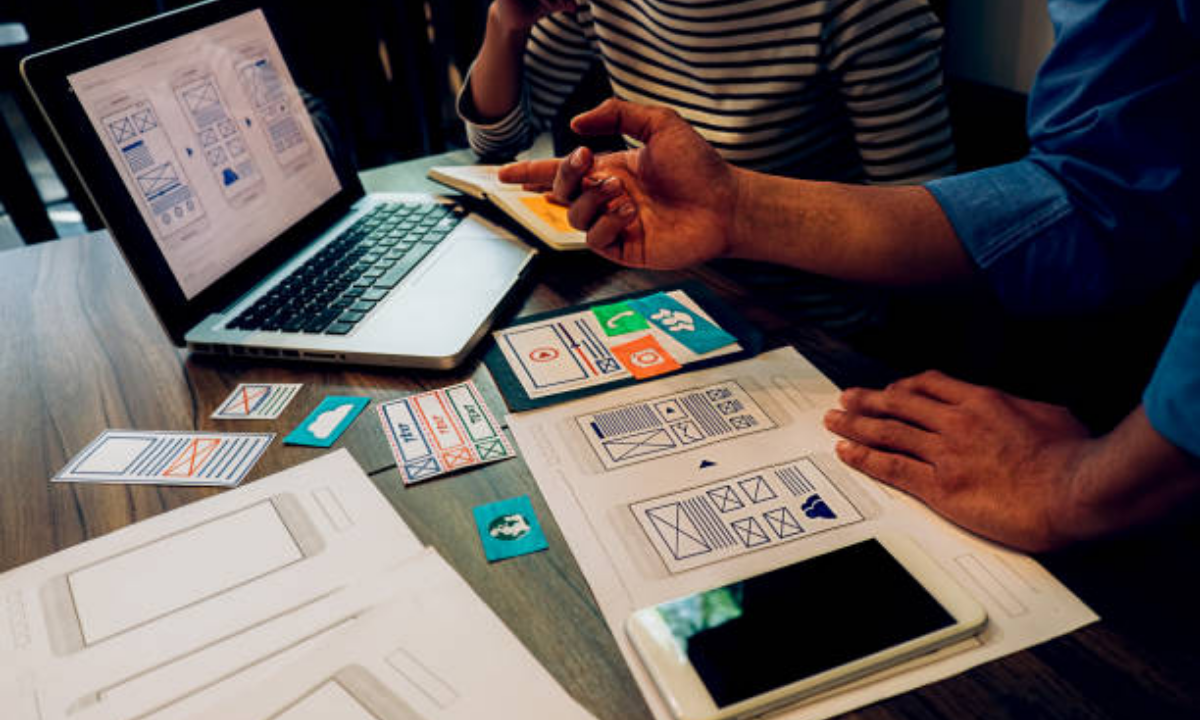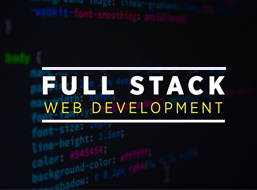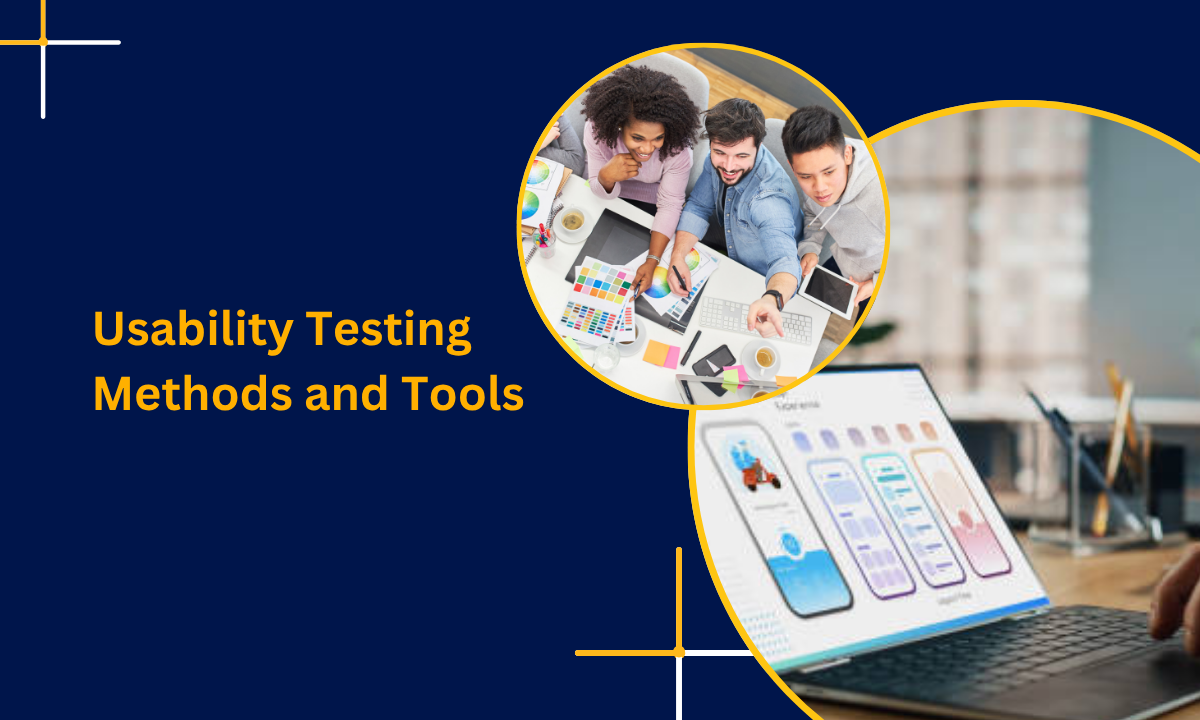Table of contents:
|
1. What does “usability test meaning” really cover? |
|
2. Why usability testing matters for UI/UX design |
|
3. The usability testing process we follow |
|
4. Common usability test methods you’ll master |
|
5. Selecting the right user experience testing tools |
|
6. Key usability testing metrics to track |
|
7. The benefits of usability testing for product success |
|
8. Why undertaking training matters – especially in Bangalore |
|
9. Final Thoughts |
|
10. FAQs |
When we begin a project, one of the first steps we emphasise at Apponix is the importance of usability tests.
Understanding how real users interact with your interface gives you actionable insights, beyond opinions or assumptions.
From the meaning of usability testing to practical implementation in UI/UX and detailed metrics, we cover it all. And yes, we’re going to explore training pathways too, including our UI/UX design course in Bangalore, so you can master this valuable skill.
What does “usability test meaning” really cover?

Usability testing refers to the process of evaluating a digital product—whether a website, mobile app or prototype- by observing real users completing defined tasks.
The aim is to assess effectiveness (can users complete it?), efficiency (how easily can they do it?) and satisfaction (how do they feel doing it?).
In short, we want to find out whether the product meets the users’ goals and where friction exists. This is a foundational part of usability testing in UI/UX and usability testing in UX design.
Why usability testing matters for UI/UX design
When we teach our students at Apponix, we emphasise that design isn’t just about how something looks—it’s about how someone uses it.
Without proper usability tests, you risk launching a polished product that fails to delight or even frustrates users.
Usability tests let you:
-
Discover hidden usability issues before launch
-
Validate design decisions with evidence, not assumptions
-
Measure how optimised your user flows are (i.e., fewer clicks, less confusion)
-
Improve retention, conversion or engagement metrics by refining the experience
By making usability testing in UX design a trained, repeatable process, we help design teams transform user feedback into meaningful improvements.
The usability testing process we follow
Here’s a step-by-step breakdown of how we conduct usability tests at Apponix, and what we teach in our training:
-
Define clear goals and tasks
We begin by defining what success looks like: What tasks should users complete? What issues are we trying to uncover? This gives focus to our usability test methods. -
Recruit participants
Choose participants who match your target users. At Apponix, we emphasise the importance of screening to ensure relevant insights. -
Choose an appropriate method and tools
Decide whether to run moderated tests (the facilitator guides the session) or unmoderated tests (users complete tasks remotely on their own). Modern platforms like UXtweak support both and are among the best usability testing platforms. -
Conduct the test and observe
During the test, you observe how users navigate, what mistakes they make, and where they hesitate or get lost. Capture metrics too. -
Analyse findings and prioritise fixes
We guide students at Apponix to translate observations into actionable improvements. We track usability testing metrics such as task success rate, time on task, errors, and satisfaction scores. -
Iterate and test again
After implementing changes, you validate that improvements worked. This cycle of design-test-iterate is central to effective UX.
Common usability test methods you’ll master
In our training, we cover several established methods so you can choose the right one for your project:
-
Lab Usability Testing: Users come into a lab; we control the environment, moderate the session and observe live. Good for in-depth studies.
-
Remote Moderated / Unmoderated Testing: With remote tools, you can test users virtually, ideal for flexible and cost-effective testing.
-
First-Click Testing: We check whether users click in the right place the first time, useful for navigation and homepage layouts.
-
Guerrilla Usability Testing: Quick, informal tests done in real-world locations (cafés, workspaces) to get rapid feedback when resources are limited.
-
Prototype Testing: Running tests on early prototypes helps catch usability problems before full development.
Selecting the right user experience testing tools
During our UI/UX design course in Bangalore at Apponix, we introduce a range of user experience testing tools and help you compare their pros and cons.
Use a platform which offers features like session recording, heatmaps, first-click tests, prototype testing and participant recruitment. When choosing a tool, ask:
-
Does it support both moderated and unmoderated tests?
-
Can I recruit relevant participants easily?
-
Does it provide both qualitative insights (video/audio) and quantitative metrics (click rates, time on task)?
-
Is it scalable and cost-effective for my project?
Key usability testing metrics to track
Knowing what to measure is critical for effective usability testing. At Apponix we emphasise these metrics:
-
Task Success Rate: Percentage of users who complete a task successfully.
-
Time on Task: How long it takes on average. Long times may indicate confusion.
-
Error Rate: Number of errors or wrong clicks.
-
User Satisfaction Score: Often via surveys after tests, e.g., “How satisfied were you on a scale?”
-
Lostness / Navigation Paths: How many users get lost in a flow? What alternate paths do they take?
Tracking and analysing these metrics helps build evidence for design decisions and enables optimisation of user flows.
The benefits of usability testing for product success
In my role as trainer, I stress that usability testing has multiple benefits:
-
Better design quality: You uncover and fix issues early, reducing costly changes later.
-
User-centric products: By observing real users, you align the product with their needs, boosting satisfaction and adoption.
-
Reduced development waste: Iterative testing means fewer reworks and more efficient development.
-
Stronger ROI: Products that are easier to use typically drive higher engagement, conversions and retention.
-
Competitive advantage: Organisations that embed usability testing into their UX design process are likely to outperform those that don’t.
Why undertaking training matters – especially in Bangalore
Here at Apponix, our Training Institute in Bangalore focuses on imparting practical skills in usability testing, UI/UX design and digital product development.
If you’re aiming to become a proficient UX professional, our UI/UX design course in Bangalore covers the full spectrum, design fundamentals, usability test methods, analysing metrics and driving insights into design improvements.
The tech ecosystem in Bangalore makes it a strategic place to train and build a portfolio of real-world usability studies.
Final Thoughts
As a trainer at Apponix, I’ve witnessed first-hand what happens when usability testing becomes a fundamental part of the design workflow.
We stop guessing what users want and start seeing real behaviours. We replace assumptions with measured data. We iterate not because we must but because we know that each cycle brings us closer to a product that delights.
If you want to confidently navigate usability tests, select the right usability testing platforms, apply the most appropriate usability test methods, capture meaningful usability testing metrics, and benefit from usability testing in UI/UX and usability testing in UX design, then training is your gateway.
In Bangalore, especially, choosing the right course empowers you to launch your career and help right-sized organisations build better experiences. With our UI/UX design course in Bangalore at Apponix, you will learn the full process, from defining goals to conducting tests, analysing data and making design improvements.
Enroll today. Let us help you lead usability-focused design projects with confidence and deliver experiences your users love.
FAQs
Q: What exactly is a usability test?
A usability test is an evaluation method where real users attempt tasks in a prototype or live product, so you can observe how easy or difficult it is for them to use.
Q: How is usability testing in UIUX different from traditional design review?
Traditional review often relies on expert opinion or internal feedback. Usability testing brings in real users and focuses on their behaviour, rather than what designers think is correct.
Q: What tools should I look for in a usability testing platform?
Look for tools with support for remote tests, prototype testing, session recording, heatmaps, recruitment options and robust analytics.
Q: When should I run usability tests?
Ideally, throughout the design lifecycle: early on prototypes, before major launches or redesigns, and iteratively to validate improvements.
Q: What benefits will I gain after a usability testing training at Apponix?
You’ll gain hands-on experience setting up tests, interpreting metrics, working with real tools, presenting findings and influencing design decisions. You’ll be able to step into roles in UI/UX that demand that kind of skill.




